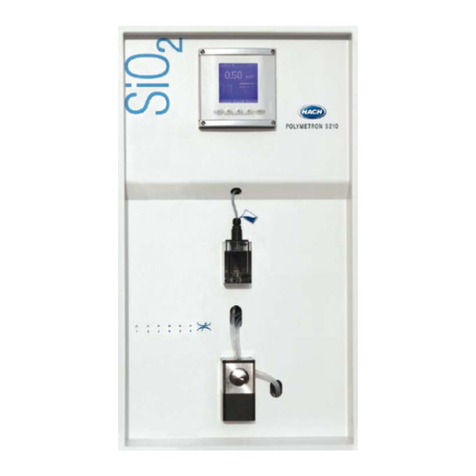
SODIMAT - Model 9073
iix
Chapter 5 : Programming ............................................... 5-1
5.1 General configuration and calibrations ............................. 5-2
5.2 Alarm configuration ............................................ 5-4
5.3 Analogue output configuration ................................... 5-6
5.4 Serial interface configuration .................................... 5-8
5.5 Use of the interface RS232 ..................................... 5-10
55.6 Function parameter configuration ................................ 5-12
Chapter 6 : Calibrating the instrument .................................... 6-1
6.1 Calibration of the flowmeter ..................................... 6-1
6.2 Calibration of the temperature sensor .............................. 6-1
6.2.1 Temperature automatic compensation ...................... 6-1
6.2.2 Temperature manual compensation ........................ 6-2
6.3 Measurement calibration ........................................ 6-2
6.3.1 CARCAL calibration .................................... 6-3
6.3.2 AUTOCAL calibration ................................... 6-4
6.3.3 Manual calibration ...................................... 6-7
6.3.4 Process calibration ..................................... 6-7
Chapter 7 : Maintenance ................................................ 7-1
7.1 Normal operating maintenance ................................... 7-1
7.2 Specific operating maintenance .................................. 7-1
7.2.1 Electrode slope loss .................................... 7-1
Chapter 8 : Troubleshooting ............................................ 8-1
8.1 Error messages ............................................... 8-1
8.2 Acknowledgment .............................................. 8-1
Chapter 9 : Troubleshootings, causes ans solutions ......................... 9-1
Chapter 10 : Options .................................................. 10-1
10.1 Mixed bed option ............................................ 10-1
10.2 Liquid conditioning option (kit K) ................................ 10-5
10.2.1 Generality .......................................... 10-5
10.2.2 Putting into service ................................... 10-6
Appendix A : Spare parts list ........................................... A1-1
Appendix B : Configuration table for the user ............................. B1-1
Appendix C : Safety data sheet ......................................... C1-1
C.1 Diisopropylamine ............................................. C-1
C.2 Hydrofluoric acid .............................................. C-3
C.3 Ammonia solution ............................................. C-5
C.4 Ethanolamine ................................................ C-7




























